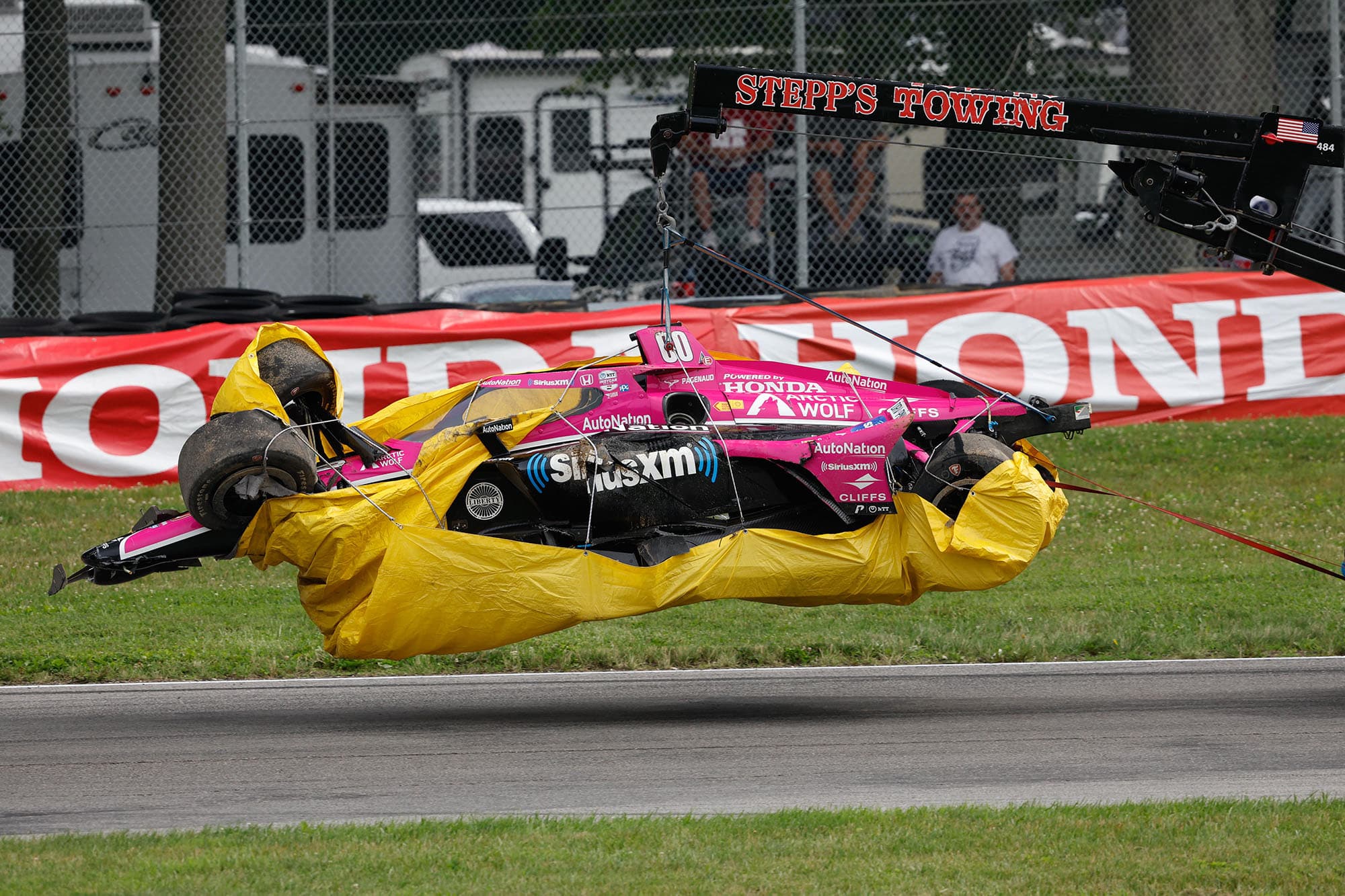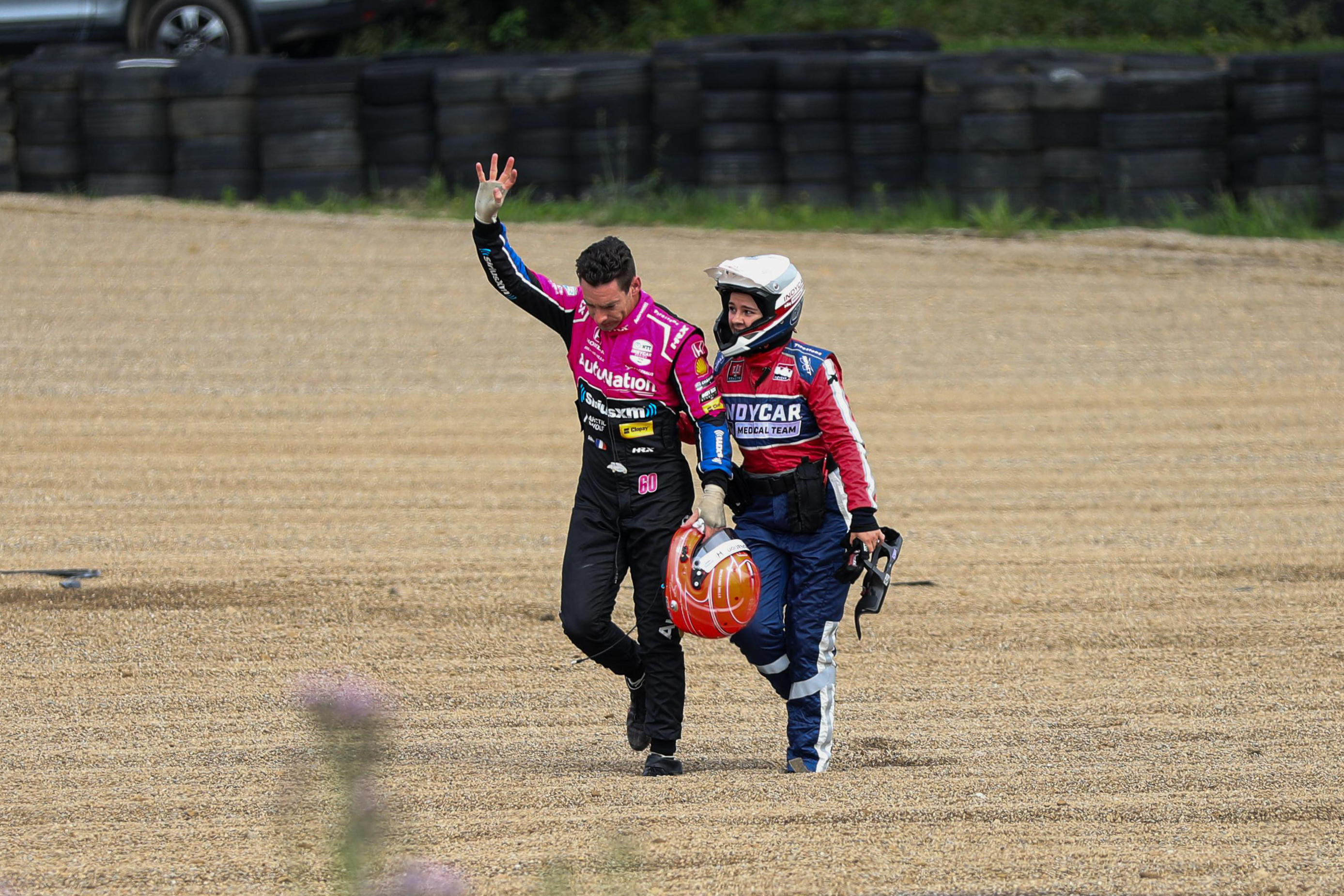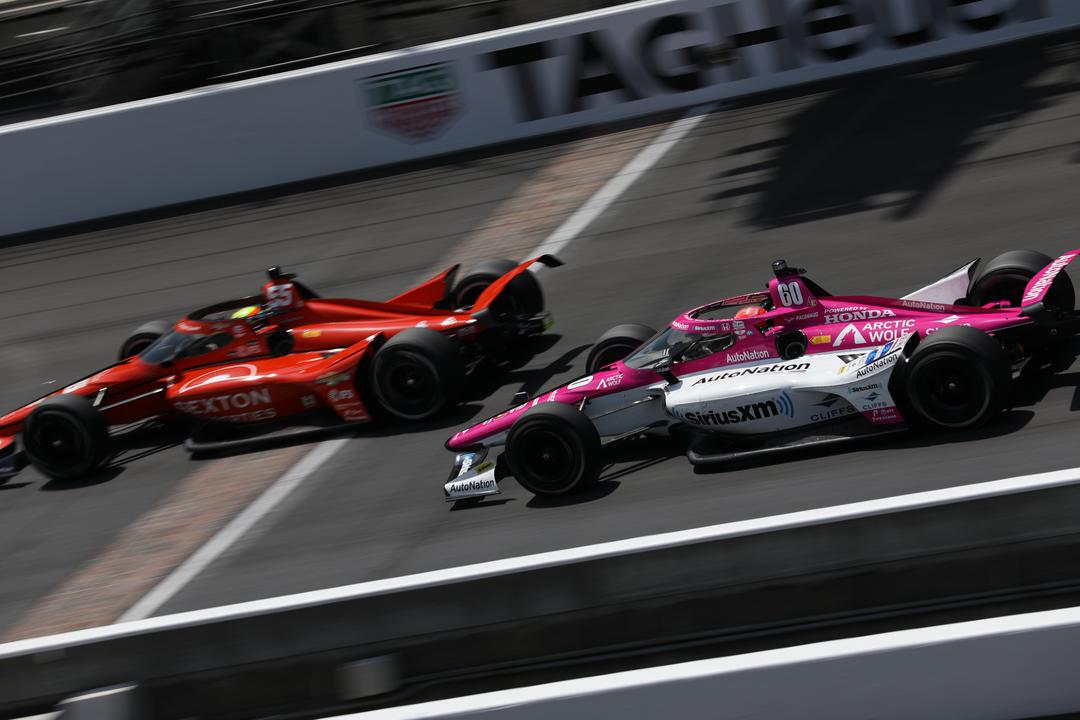

Simon Pagenaud is not the first IndyCar driver to suffer a concussion in recent years, but what happened to him at Mid-Ohio two months ago and since is an important chance for everyone around IndyCar to reflect on how to support drivers in that situation.
Unlike a bone or muscle injury, a concussion can’t always be easily diagnosed and it can lead to an indefinite change in behaviour as well as an increased chance of further brain injuries. Studies have shown it can even increase the likelihood of dementia, depression and even suicidal tendencies in people suffering from it in some cases.
So given the potential seriousness of the condition I can’t help but think we all – media, fans and the wider IndyCar paddock – could have done more to support Pagenaud in this period. Our focus moved on too quickly.
Of course, the shiny new thing – in this case, the driver that comes in to replace him – has been hyped up. Rookie Linus Lundqvist has (rightly) used the chance to move up the silly season food chain and now looks set to bag a seat at the series’ top team, Ganassi.
But can you imagine being Simon, sitting at home on a couch with an indefinite recovery prognosis, watching someone else drive your car? It doesn’t bear thinking about.
And it’s so much bigger than just racing. Pagenaud is a husband with children and a dog. He’s a family member. His life may have been – and probably has been – fundamentally changed by this episode and his life is worth so much more than just an IndyCar championship and Indianapolis 500 win.
The last concussion of this severity in IndyCar was caused by then-Arrow McLaren driver Oliver Askew’s crash during the 2020 Indy 500.
It took weeks to get his concussion correctly diagnosed – by which time his team had made the decision to drop him, which it’s always maintained was based on his season-long form before the crash – but he spoke of both a loss in performance and his family noticing changes in his behaviour for the worse.
I’ll never forget Askew’s bravery in speaking out about his condition. After all he was in the midst of trying to keep his career alive and risked teams asking questions about how the concussion might impact him.
Probably the most vocal person in motorsport on concussion in the past has been NASCAR legend Dale Earnhardt Jr, who also shone a light on how many he’d had (around 20 concussions) as well as how many other drivers around him he felt had and on the pressure to get back in the seat before someone else took it away from you.
“Here I am a month down the road [from a concussion-inducing crash in NASCAR in 2012] still waking up every day and as soon as you open your eyes you’re like ‘still there’ – just the fogginess and the mental fatigue, it’s almost like a hangover. It’s there every minute of the day,” he explained in an HBO documentary.
“I felt like I was supposed to push through. I felt like I was supposed to try and make it work until it went away.”
Earnhardt praised Askew in an interview with the Associated Press shortly after his situation became clear. There have been other cases too, with 2004 NASCAR Cup champion Kurt Busch recently announcing his retirement following a concussion that kept him out for most of the second half of last year and this year. He’s 45 but was still competitive before his accident.
Prior to that the UK’s motorsport governing body made tweaks to its own concussion protocol after a crash for British Touring Car champion Andrew Jordan. Progress is being made, but it feels like other series aren’t making the same steps as IndyCar has.
One very clear aspect of Pagenaud’s concussion compared to Askew’s is that it was caught quickly. That’s not to say there was something wrong with the diagnostic aspect of IndyCar’s concussion protocol in 2020, as concussions are relatively simple to miss and sometimes don’t manifest until days and weeks after a crash.

But with Pagenaud’s crash, its rigorous system worked immediately.
IndyCar requires drivers to conduct a simple reaction time test as part of its medicals and this allows a baseline for when testing a driver. The earpieces IndyCar drivers wear measure g-forces, and if they go above 80g in a crash, the driver is immediately subjected to multiple tests to check for concussions.
They then go through those tests again in the days after, to try to catch late-developing concussions. IndyCar’s medical staff are constantly observing and absorbing new research from other sports into concussions and their effects.
If IndyCar didn’t have one of the most rigorous concussion testing programmes in racing, it might not have caught Pagenaud’s. So that’s a small win in what is a very sad story.
The problem that is the same now as it was back when Askew had his concussion is: how do we motivate drivers in other series where testing protocols aren’t as rigorous to come forward and seek out testing?
If the drivers that get a concussion are sidelined by their teams and released, that’s only going to encourage drivers of any age to cover up their condition for fear of losing their careers.
Motorsport as a whole needs more research, more education, and perhaps most importantly, more help, for those drivers that are cast aside.

Of course, racing teams are businesses and their currency is performance. No one expects teams to keep drivers who haven’t been competitive enough in a seat just because they’ve had a concussion. Pagenaud was having a poor season before his Mid-Ohio crash sidelined him and there were already rumblings Meyer Shank Racing was going to go in a different direction for 2024.
But with Askew now commentating on Formula E, and with Pagenaud being 39 and potentially finding there’s no immediate route back to IndyCar when he’s recovered, things don’t always look good for drivers’ racing careers after a concussion.
Shank has made no suggestion Pagenaud won’t be back for 2024 if he’s fit, but he’s out of contract at the end of this year and the team had been considering its future line-up before his injury so there’s no certainty right now that he’ll have a seat next year.
So is there more governing bodies can do to help the drivers suffering from a concussion? Is there some sort of way to support them better? It’s tough because some solutions are going to cost a lot of money that has to come from somewhere and the answers even with an unlimited budget wouldn’t be easy to come by.
It just feels like the right time to ask these questions in the hope motorsport can make similar steps with assisting and supporting concussion recovery as has been made in recent years with diagnosing and testing.
IndyCar’s rigorous concussion protocol already puts it far above some other series out there. It’s also constantly evaluating things it can do in and outside of the car to reduce the chances of concussion.
It’s now a case of how do we encourage young drivers to come forward to get the help they need if they find themselves with an undiagnosed condition?
Askew thankfully had plenty of chances since his concussion to impress and had a season in Formula E alongside multiple subsequent IndyCar outings.
Shouting about that from the rooftop in an increased push for education would certainly be a start.
In the meantime we wish the best to Simon and his young family and we wish him well with his recovery. And we need to let him know that while other drivers have taken his seat, he has not been forgotten and his recovery is of vital importance to the racing world as much as it is in his personal life.



